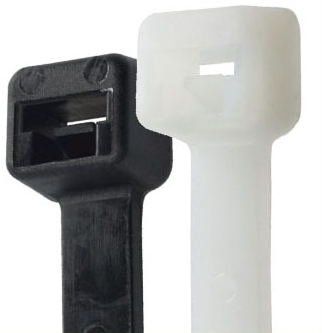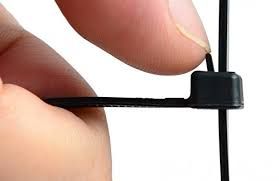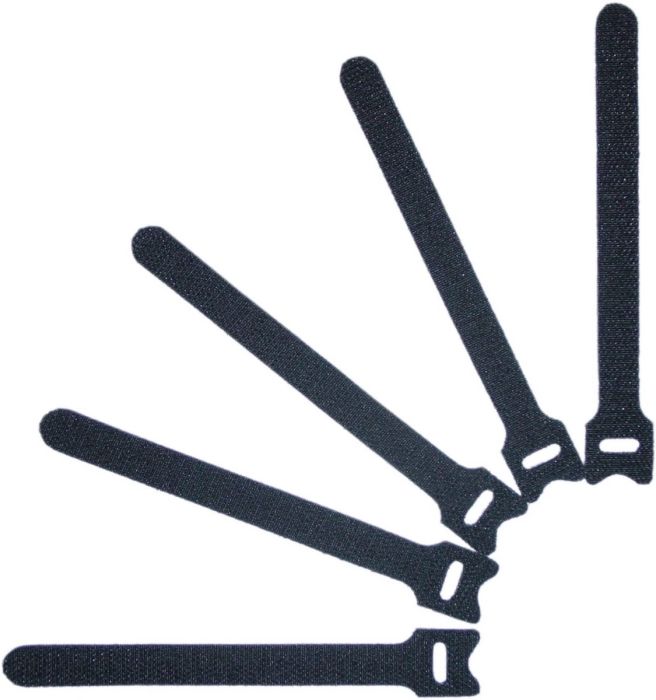Building a powerful PC isn’t just about the parts. It’s about creating a system that runs efficiently, cools properly, and looks as sharp as it performs.
Cable ties might seem like a small detail, but in PC building, they make a massive difference.
They help manage airflow, improve safety, and transform your build from messy to magnificent. In this post, we’ll explore how cable ties support better PC builds and why they deserve your attention.
Why Cable Management Matters
PC builders often focus on CPUs, GPUs, and RAM, but ignore the mess behind the motherboard tray. Yet tangled cables aren’t just ugly—they block airflow, collect dust, and make future upgrades a pain.
Clean cable management helps:
- Keep components cooler
- Reduce static electricity risks
- Improve system longevity
- Enhance visual appeal (especially in glass-panel cases)
And all of that starts with a few packs of cable ties.
How Cable Ties Support Better Airflow
Cables draped across the motherboard or stuffed between fans and radiators disrupt airflow patterns. When cool air can’t flow smoothly through your case, components heat up faster. This forces your fans to work harder, increasing noise and lowering thermal efficiency.
Proper cable tie use allows you to route wires behind the motherboard tray or along designated channels. This clears the main chamber for unobstructed airflow. It’s not just about neatness—it’s about system stability under load.
In high-performance builds, especially those using overclocked CPUs or GPUs, airflow is everything. A few misplaced wires can cause hotspots, which over time, reduce the life span of your hardware.
Types of Cable Ties for PC Builders
Standard Nylon Zip Ties

These are the most common
cable ties found in PC builds. They’re cheap, lightweight, and available in various lengths. Most builders use 4 to 8-inch ties, usually black to match standard cable sleeves.
They offer a strong grip and are great for bundling cables behind the case or securing fan wires. However, they are single-use—once tightened, they must be cut to be removed.
Releasable Cable Ties
 Releasable ties
Releasable ties are ideal for PC builders who frequently upgrade or swap components. They function like standard zip ties but have a small release tab. This makes them perfect for temporary routing, testing layouts, or making adjustments after initial assembly.
They are slightly bulkier than standard zip ties but save time in the long run, especially for anyone who likes to tinker.
Hook-and-Loop Straps (Velcro Ties)
 Velcro straps
Velcro straps are a favorite in premium builds. They’re reusable, adjustable, and gentle on cables. Builders often use them to bundle PSU cables, route fan connectors, or secure RGB lighting strips.
They’re perfect for managing soft-sleeved or braided cables that don’t sit flat with plastic ties. Many PC cases now include Velcro straps pre-installed behind the motherboard tray for convenience.
Where and How to Use Cable Ties in a PC Build

Behind the Motherboard Tray
This is the primary space for cable routing. Use cable ties to group PSU cables, fan wires, and RGB connectors. Many cases have tie-down points—small metal loops or slots—specifically for cable ties. Take advantage of them to lock cables in place and prevent shifting.
Route cables through the case’s grommets and secure them with ties at intervals. This keeps them flat, allowing the side panel to close smoothly.
Under the PSU Shroud
Power supplies, especially non-modular ones, generate a tangle of excess cables. Tuck unused connectors under the shroud and secure them with cable ties to prevent airflow blockage. Modular PSU users can tie their selected cables into neat bundles before installing them into the case.
This area also benefits from Velcro straps, as you may need to remove or adjust cables later during upgrades.
Near Fans and Radiators
Fan cables tend to hang loosely, especially in multi-fan setups. Secure them with ties along the frame or edge of the case to prevent them from brushing against moving blades.
With AIO liquid coolers, the pump cables should be routed cleanly out of the way. Use
zip ties to secure them along radiator mounts or fan brackets.
Cable Tie Tips for a Clean Build
Start by laying out your cables before tightening anything. Use twist ties to group them temporarily while planning your routes. Once you're happy with the layout, replace the temporary ties with permanent ones.
Avoid overtightening, especially near SATA power and data cables. Pinched wires can cause data loss or hardware issues. Trim the excess tail of each zip tie with flush cutters to prevent sharp edges that could damage cables or your hands.
If possible, match the cable tie color to your build. Black is universal, but white or clear ties can look better in white-themed builds. Custom modders sometimes use colored or UV-reactive ties to match their RGB lighting schemes.
Building with Style: The Aesthetic Power of Clean Cables
Glass-panel PC cases are now the norm, which means messy builds are harder to hide. Enthusiasts judge the quality of a build not just by the specs but by how clean the interior looks.
Cable ties help organize everything into sleek, parallel lines. Sleeved cables paired with precise routing can become a design feature in themselves. Custom PC builders often spend as much time on cable management as they do on cooling or lighting.
In some competitive modding scenes, cable work alone can win or lose a showcase. Even in basic home builds, clean cabling gives a sense of craftsmanship and care.
Maintenance and Upgrades Made Easier
One of the most underrated benefits of good cable tie use is how it simplifies future maintenance. A well-routed build allows you to:
- Easily swap RAM or GPUs without disturbing other components
- Identify and trace cables quickly during troubleshooting
- Dust or clean your system without snagging wires
If you've ever had to reassemble a spaghetti mess of wires just to change a fan, you know how valuable a tidy setup can be.
For this reason, many builders favor using a mix of zip ties and Velcro straps. Zip ties provide structure, while Velcro allows flexibility. This hybrid approach balances cleanliness with convenience.
The Small Investment That Transforms Your Build
It’s easy to spend hundreds on a power supply or case, but ignore the few dollars needed for cable ties. Yet the difference in the final result is night and day.
A handful of ties can:
- Improve airflow
- Lower temperatures
- Reduce fan noise
- Enhance system stability
- Make upgrades easier
- And make your build look 10x better
Considering how little they cost, cable ties deliver one of the highest returns on investment in the entire building process.
Final Thoughts
Cable ties may be small, but in PC building, they carry serious weight. From cleaner airflow to better aesthetics, these humble tools turn chaos into clarity. Whether you’re building your first PC or your fiftieth, don’t overlook the role of cable ties. The best builders always think two steps ahead—and tie everything down on the way there.
Let your cables disappear, so your hardware can shine.
For more insights and tips on cable ties and other related products, explore
cabletiesunlimited.com, get a
quick and free quote, and follow us on our social media communities on
Facebook and
Instagram!
 These are the most common cable ties found in PC builds. They’re cheap, lightweight, and available in various lengths. Most builders use 4 to 8-inch ties, usually black to match standard cable sleeves.
They offer a strong grip and are great for bundling cables behind the case or securing fan wires. However, they are single-use—once tightened, they must be cut to be removed.
These are the most common cable ties found in PC builds. They’re cheap, lightweight, and available in various lengths. Most builders use 4 to 8-inch ties, usually black to match standard cable sleeves.
They offer a strong grip and are great for bundling cables behind the case or securing fan wires. However, they are single-use—once tightened, they must be cut to be removed.
 Releasable ties are ideal for PC builders who frequently upgrade or swap components. They function like standard zip ties but have a small release tab. This makes them perfect for temporary routing, testing layouts, or making adjustments after initial assembly.
They are slightly bulkier than standard zip ties but save time in the long run, especially for anyone who likes to tinker.
Releasable ties are ideal for PC builders who frequently upgrade or swap components. They function like standard zip ties but have a small release tab. This makes them perfect for temporary routing, testing layouts, or making adjustments after initial assembly.
They are slightly bulkier than standard zip ties but save time in the long run, especially for anyone who likes to tinker.
 Velcro straps are a favorite in premium builds. They’re reusable, adjustable, and gentle on cables. Builders often use them to bundle PSU cables, route fan connectors, or secure RGB lighting strips.
They’re perfect for managing soft-sleeved or braided cables that don’t sit flat with plastic ties. Many PC cases now include Velcro straps pre-installed behind the motherboard tray for convenience.
Velcro straps are a favorite in premium builds. They’re reusable, adjustable, and gentle on cables. Builders often use them to bundle PSU cables, route fan connectors, or secure RGB lighting strips.
They’re perfect for managing soft-sleeved or braided cables that don’t sit flat with plastic ties. Many PC cases now include Velcro straps pre-installed behind the motherboard tray for convenience.
